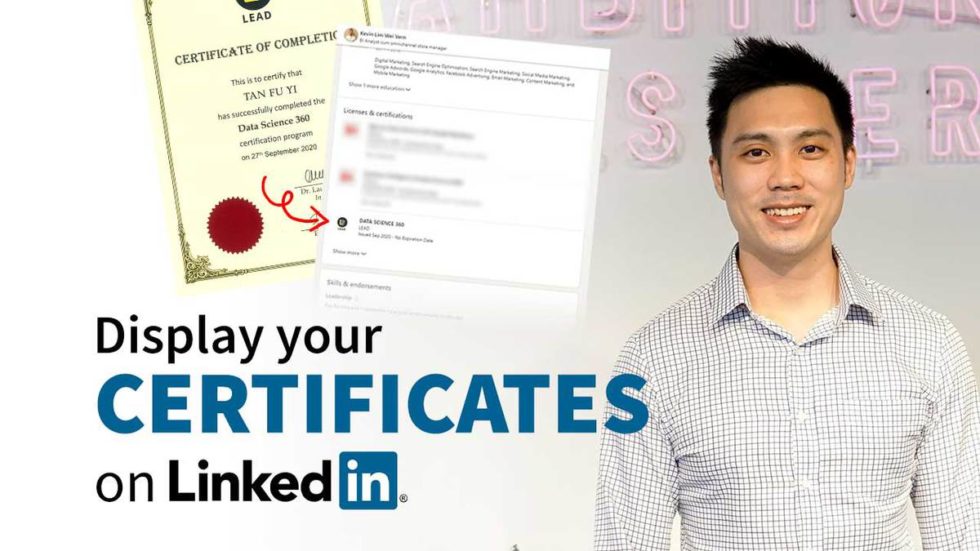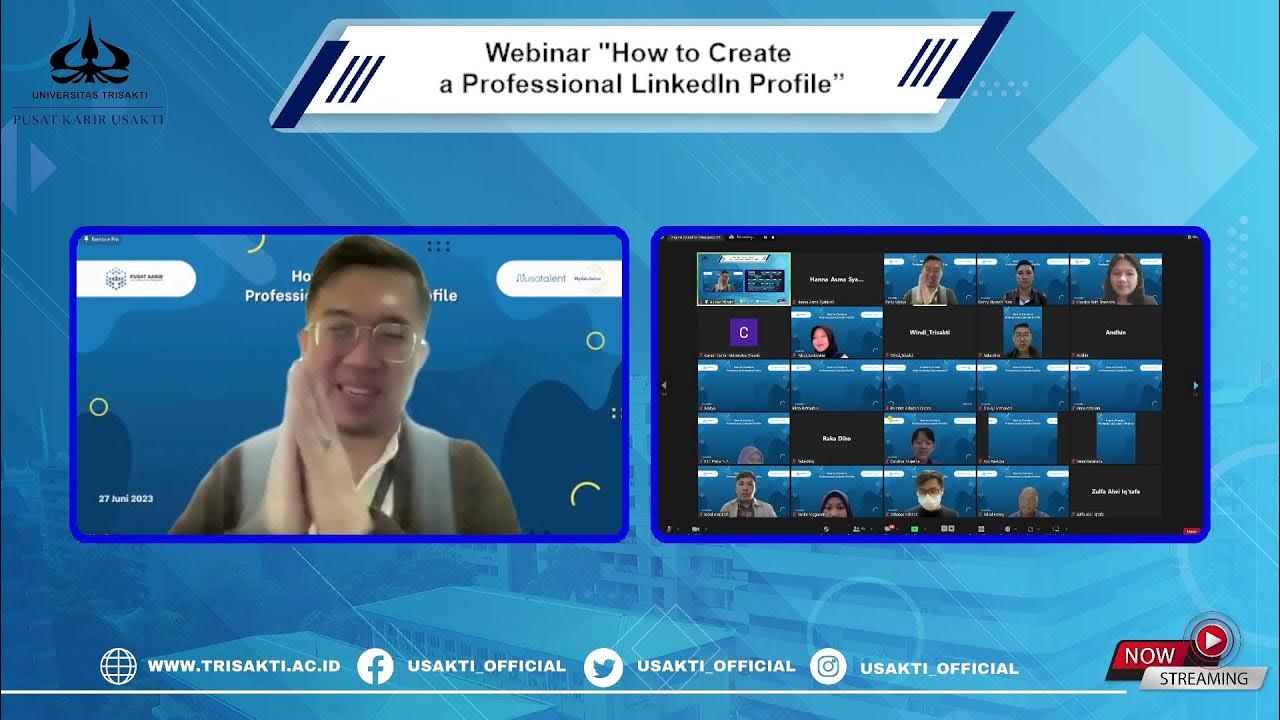In today's digital age, maintaining an impressive LinkedIn profile is essential for anyone looking to enhance their professional presence online. Whether you're job hunting, networking, or simply wanting to share your expertise, showcasing your credentials can make a world of difference. But how do you effectively present those credentials? Let's dive into the reasons why adding credentials to your LinkedIn profile can significantly impact your professional journey.
Why Add Credentials to Your LinkedIn Profile?

Imagine meeting someone for a coffee, and they ask you about your qualifications. What do you do? You share your experiences, right? Now, think of your LinkedIn profile as your digital resume, where showcasing your credentials is just as vital. Here’s why you should prioritize this aspect:
- Builds Credibility: Having verified credentials on your profile instantly boosts your credibility. Whether it’s degrees, certifications, or licenses, these achievements show potential employers and connections that you’re serious about your profession.
- Increases Visibility: LinkedIn's search features allow people to find you based on your credentials. When you include relevant qualifications, you improve your chances of appearing in search results, making it easier for recruiters and peers to find you.
- Highlights Your Expertise: Listing your credentials allows you to showcase your specific skills and areas of knowledge. This can differentiate you from others in your field and position you as a go-to expert.
- Encourages Networking: Credentials can be conversation starters. When you connect with industry professionals, having credentials listed provides common ground for discussions and can lead to valuable networking opportunities.
- Improves Job Opportunities: Recruiters often filter candidates based on qualifications. By prominently displaying your credentials, you increase your likelihood of being considered for job openings that match your skills.
In short, adding your credentials to LinkedIn isn’t just a minor update; it’s a strategic move in cultivating your professional image. So, take the time to highlight those achievements and watch as new opportunities unfold!
3. Types of Credentials to Consider

When it comes to enhancing your LinkedIn profile, selecting the right types of credentials is crucial. These credentials not only showcase your qualifications but also help you stand out in a competitive job market. Here’s a rundown of some essential credentials you might want to consider adding:
- Degrees and Certifications: List your academic degrees and any relevant certifications that showcase your expertise. This could be anything from a Bachelor's in Business Administration to specialized certifications like PMP or AWS Certified.
- Professional Memberships: Being a member of professional organizations related to your field can boost your credibility. It demonstrates your commitment to your career and often gives you access to networking opportunities.
- Licenses: If your profession requires it, including licenses can be incredibly valuable. For example, doctors must have the right medical licenses, and engineers may need PE (Professional Engineer) licenses.
- Online Courses: In today’s digital age, online learning is more accessible than ever. Showcase any relevant online courses you’ve completed through platforms like Coursera, Udemy, or LinkedIn Learning.
- Awards and Honors: Don’t hold back on sharing accolades you’ve received. Whether it’s Employee of the Month or an industry-specific award, this can highlight your dedication and achievements.
- Projects and Publications: If you've worked on significant projects or have been published in industry journals, definitely include these. They provide concrete examples of your expertise and the value you bring to the table.
So, take a moment to evaluate which credentials you possess and how they can effectively reflect your professional journey!
4. Step-by-Step Guide to Adding Credentials
Now that you know which credentials to showcase, let’s dive into how to actually add them to your LinkedIn profile. Follow this straightforward guide, and you’ll have your credentials displayed in no time!
- Log in to LinkedIn: Start by logging into your LinkedIn account. The first step is as easy as that!
- Go to Your Profile: Click on your profile picture at the top of the homepage to access your profile. This is essentially your professional online resume.
- Select “Add profile section”: You’ll see an option to add a profile section. Click on this to expand the dropdown menu.
- Choose “Add Credentials”: From the dropdown, navigate to the section dedicated to credentials. Depending on what you’d like to add, you might see categories like “Licenses & Certifications” or “Education.”
- Fill Out the Relevant Details: For each credential, enter the necessary information. This might include the name of the degree or certification, issuing organization, dates, and any associated links.
- Save Changes: Once you’ve filled out all the fields, click the save button. Your new credentials will now be added to your profile!
- Review and Update Regularly: Don’t forget to revisit your profile regularly. As you gain new skills or complete additional courses, ensure you keep your credentials up-to-date.
And there you have it! Following these simple steps should help you enhance your LinkedIn profile dramatically, making it a powerful tool for your career advancement.
5. Tips for Effectively Showcasing Your Credentials
When it comes to LinkedIn, showcasing your professional credentials is essential in making you stand out to potential employers, collaborators, or industry peers. Here are some practical tips to help you present your credentials effectively:
- Optimize Your Headline: Your LinkedIn headline should do more than just state your job title. Use this space to highlight your key skills or areas of expertise. For instance, instead of “Software Engineer,” consider “Software Engineer | Passionate About AI & Machine Learning.”
- Include a Professional Photo: Always upload a clear and professional-looking photo. Profiles with pictures receive far more engagement. Choose a background that complements your personality but doesn’t distract from your face.
- Utilize the Featured Section: Don’t overlook the featured section to showcase your best work. You can add articles, presentations, or links to projects you're proud of. This acts as your personal portfolio.
- Quantify Your Achievements: Numbers speak volumes. Instead of saying, “responsible for increasing sales,” say, “increased sales by 30% in one year.” This adds credibility to your claims.
- Request Recommendations: Recommendations from colleagues and supervisors can add much credibility to your profile. Do not hesitate to reach out and ask for these; most people are happy to help!
- Join Relevant Groups: Engage with groups related to your industry. This not only showcase your interest but also allows you to network and gain endorsements.
6. Common Mistakes to Avoid
While creating your LinkedIn profile, there are a few pitfalls that you absolutely want to steer clear of. Here are some common mistakes to avoid to ensure that your credentials shine:
- Using a Generic Summary: A generic “About” section is a big missed opportunity. Personalize it by infusing your personality and career aspirations, as it’s your chance to tell your story.
- Ineffective Keywords: Not utilizing relevant keywords can make your profile hard to find. Think about industry-specific terms that recruiters might be searching for and incorporate them naturally into your profile.
- Neglecting to Update Regularly: Your career isn’t static, and neither should be your LinkedIn profile. Regular updates about new skills, achievements, or roles are crucial. Consider doing a quarterly review.
- Ignoring Privacy Settings: Ensure your profile is public and doesn’t limit visibility; you want potential employers or collaborators to find you easily.
- Lack of Engagement: Simply having a profile isn’t enough. Lack of activity like posts, shares, or comments can make you invisible. Engage with content relevant to your field regularly.
- Typos and Grammatical Errors: Professionalism matters! Typos can make you seem careless. Make sure to proofread your profile or better yet, have someone else review it for you.
Showcasing Your Professional Credentials on LinkedIn
LinkedIn has become an essential platform for professionals to connect, share and showcase their careers. One of the primary functions of LinkedIn is to serve as an online resume where you can effectively showcase your professional credentials. By optimizing your LinkedIn profile, you can increase visibility to recruiters and enhance your networking opportunities. Here are some essential strategies to effectively showcase your credentials:
- Complete Your Profile: Ensure that all sections of your profile are filled out, including your summary, experience, skills, and endorsements.
- Professional Photo: Use a clear, professional-looking headshot. Profiles with photos receive significantly more connection requests than those without.
- Featured Section: Utilize the "Featured" section to highlight articles, presentations, or successful projects. This can visually display your achievements.
- Detail Your Experience: Provide thorough descriptions of past roles, focusing on specific accomplishments, metrics achieved, and skills developed.
- Skills & Endorsements: List key skills relevant to your industry. Encourage colleagues to endorse you, as this adds credibility.
- Recommendations: Request recommendations from colleagues or supervisors. Testimonials add authenticity to your credentials.
Remember to keep your content concise yet informative. Use industry-specific keywords to enhance searchability. Maintaining an updated profile reflects your ongoing professional growth.
| Action | Description |
|---|---|
| Complete Profile | Fill all sections with relevant information. |
| Professional Photo | Upload a high-quality headshot. |
| Featured Content | Showcase key projects or articles. |
| Skills | List and manage relevant skills. |
In conclusion, a well-curated LinkedIn profile is vital for showcasing your professional credentials and can significantly impact your career advancement. By implementing these strategies, you can enhance your online presence and make a lasting impression on potential employers and peers alike.
 admin
admin








